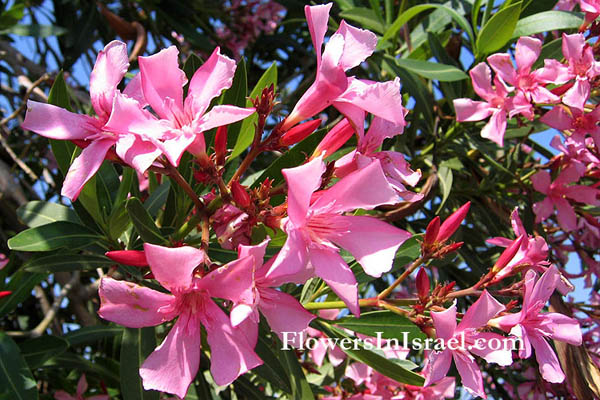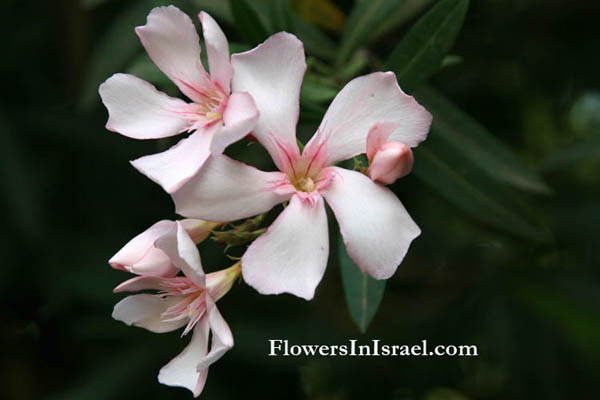Hebrew: הרדוף הנחלים, Arabic: دفلة
"Listen to me, my faithful children,
and blossom like a rose growing by a stream of water."
| Scientific name: | Nerium oleander L. | |
| Common name: | Oleander | |
| Hebrew name: | הרדוף הנחלים | |
| Arabic name: | دفلة | |
| Plant Family: | Apocynaceae, Dogbane family, הרדופיים |

|
| Life form: | Phanerophyte shrub | |
| Stems: | Up to 4m | |
| Leaves: | Alternate, whorled, linear-lanceolate, acute, coriaceous (leather-like); evergreen | |
| Inflorescence: | Terminal, corymbose | |
| Flowers: | Calyx densely glandular inside; corolla 3-4cm in diameter, usually pink, cylindrical below, infundibuliform above; tube 2cm, 5 lobes 2cm, obtuse, patent; anther-appendages long, hairy, twisted | |
| Fruits / pods: | Follicles, reddish-brown | |
| Flowering Period: | March, April, May, June, July, August | |
| Habitat: | Humid habitats | |
| Distribution: | Mediterranean Woodlands and Shrublands, Semi-steppe shrublands, Deserts and extreme deserts, Montane vegetation of Mt. Hermon | |
| Chorotype: | Mediterranean | |
| Summer shedding: | Perennating |

Derivation of the botanical name: Nerium, Oleander. Rose bay. The classical Greek name. oleander, olea, ελαια, an olive; lorandrum, Late Latin, rhododendron; Nerium. The Hebrew name: הרדוף, hardoph, Nerium oleander; together with Syrian: הרדוף borrowed from Greek: rododaphne ( Nerium oleander; lit.: ‘rose laurel'), from rodon (=rose) and daphne (=laurel).
In folk medicine it treats dermatitis, edema, hypertension and ringworm. See the list of Medicinal herbs in Israel, the parts used and their medical uses to treat various diseases. Bible Resources:

|